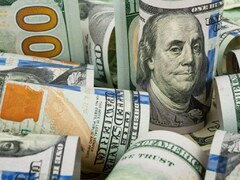Dollar Scarcity Persists Despite Current Account Surplus
Despite a current account surplus and timely processing of import Letters of Credit (L/Cs) and profit/dividend repatriation, many bank treasury departments perceive a dollar shortage in the market.
This apprehension has merit. Payment pressures have remained since December, even with a $1.2 billion current account surplus recorded over the past four months (November 2024–March 2025). However, State Bank of Pakistan (SBP) foreign exchange reserves decreased by $1.4 billion during this period, indicating absorption of surplus dollars in the interbank market.
The SBP needs liquidity and is essentially acquiring all available surplus dollars from bank treasuries, both to cover interest payments on external debt (a component of the current account) and to repay maturing loans (reflected in a significant decline in the financial account). The financial account has seen a substantial drop of $2.5 billion in the last four months (December 2024–March 2025).
The central bank is simply managing the government’s obligations by drawing dollars from the market. The actual responsibility rests with the Ministry of Finance, which has been unsuccessful in securing timely inflows, hence creating market pressure.
This scenario has extended into April. Remittances, which have performed strongly, are anticipated to fall by 15–20 percent compared to the previous month’s figures because of seasonal influences. This, along with delays in approval from the International Monetary Fund (IMF) Board, exacerbates the dollar scarcity in the market.
The Finance Minister has appealed for a rollover of a matured loan from the Export-Import Bank of China, in addition to an extension of the currency swap arrangement. Chinese rollovers are essential for obtaining IMF Board approval. The anticipation continues.
Meanwhile, exporters have decreased their forward dollar bookings due to uncertainties in global trade and possible effects on the Pakistani Rupee (PKR) resulting from proposed tariffs. Likewise, some importers are accelerating payments, adding to the unease among treasurers.
Sentiment is progressively deteriorating. Banks are aggressively competing for remittances to fulfill their payment commitments, amid claims that the SBP rarely permits them to freely procure dollars from other banks. The central bank promptly absorbs any surplus dollars available daily. To incentivize remittances, banks are providing discounts, sometimes at a loss. While this promotes formal flows, it negatively impacts banks’ earnings.
Despite the constrained market conditions, the PKR has not significantly depreciated against the USD. A consistent minor daily depreciation continues. However, as the dollar index declines, the PKR is depreciating against most trading partners’ currencies, which is advantageous for exporters.
Nevertheless, this pattern is not leading to increased dollar inflows. The SBP Governor projects around $3.5 billion in inflows by June, expecting the fiscal year to conclude with reserves exceeding $14 billion. He regularly assures that the rollovers are simply delayed.
Reports from Washington D.C. suggest that IMF Board approval is expected within two weeks, alongside confirmation of new loans or rollovers from China. This should replenish the SBP’s reserves, improve the financial account, and alleviate the dollar shortage in the market.



Comments (0)
No comments yet. Be the first to comment!
Leave a Comment